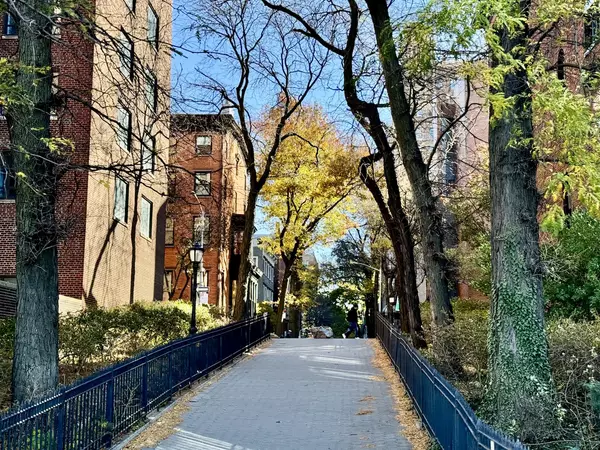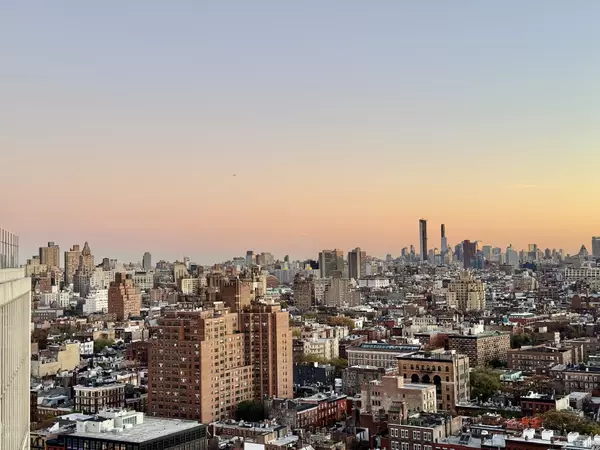Elegran Manhattan Market Update: September 2022
Overall Manhattan Market Update: September 2022

Manhattan Market Update
Manhattan real estate, measured by contract activity, picked up slightly in August, with 2% more contracts being signed compared to the prior month. This slight acceleration of the market is another datapoint supporting that the Manhattan market may have seen its low in terms of buyer activity in July. Based on the seasonal trends, on average, fewer contracts are signed in August than July, and fewer contracts are signed in September than in August. If contract activity this September matches or exceeds the contract activity in August and July, that will indicate the Manhattan market may be accelerating into the fall and winter. This will create more competition amongst buyers, possibly close the window of opportunity buyers enjoyed this summer, and be welcome news to sellers.
Meanwhile, after the stock market had the best month since 2020 in July it ended August lower after the Fed’s comments regarding their intent to continue raising interest rates and keeping them elevated through 2023. Mortgage interest rates also ticked higher in the last week of August.
Importantly, prices in Manhattan remain healthy and the market fundamentals remain stable and strong. Many national markets, which saw rapid price growth though the pandemic, are now reported to be upwards of 60% overvalued. According to a recent Fortune article, Boise is overvalued by 72%, Charlotte is overvalued by 66% and Austin is overvalued by 61%. Over the years Manhattan has proven to be more stable and resilient than other national markets. Manhattan prices do not rise and fall as dramatically, ensuring Manhattan real estate is an investment vehicle for capital preservation and growth. Buoyed by the strong rental market, desire for diversification and to hedge against inflation, more investors have returned to the Manhattan market over the summer.
Supply has steadily trended lower through the summer, which is to be expected as many sellers traditionally choose to come to market in the spring or fall and not during the summer. Additionally, 20% more homes were taken off the market in August than July, contributing to the decline in supply. Sellers took their homes off the market for a variety of reasons including choosing to capitalize on the strong rental market and rent their home rather than sell and deciding to return to the market, perhaps at a reduced price, in the fall.
Manhattan Supply
Total supply decreased by 11% in August to 6,404 units for sale. In August, 861 new listings came to the market, which is 5% less than average in the month of August over the last decade excluding 2020. Compared to last August, 20% fewer units came to market this August.
Note: “Total Supply” refers to the amount of inventory on the market at a given time. “New Supply” or “New-to-Market” refers to the amount of new inventory that came on the market in a specific time period.
Manhattan Buyer Activity as measured by signed contracts, remained below the historical average in August for the second month in a row, after nineteen consecutive months of above-average transaction volume. This August, 830 contracts were signed, compared to a historical average of 850 contracts signed in August. Contract volume increased 2% compared to last month and was nearly 30% lower compared to last August.
In June, as many contracts were signed as the decade average, while in July fewer contracts were signed than the decade average. In August, as indicated by the below chart, the gap narrowed and August’s contract volume was closer to the average for August. This is a positive sign for the coming months and points to July as being the low for contract activity.
Manhattan Monthly Contract Activity
Manhattan Market Pulse
Manhattan’s Market Pulse, currently at 0.54, continues to indicate a neutral market and has decreased 4% compared to last month and decreased nearly 12% from last year. The Market Pulse, while declining due to reduced buyer activity, has been buoyed by supply dropping. While there have been fewer active buyers in the marketplace this summer, the market has, at times, still felt competitive due to the limited amount of supply. As is seasonally normal, in August limited new inventory came to market and a number of homes were taken off the market. The Market Pulse likely will continue to trend lower into the fall as supply typically rises in September and October.
Pricing & Discounts
Manhattan prices, after hitting a short-term peak in March and April, have continued to trend down slightly since then. In August, Manhattan’s median sales price was $1,185,000, a decrease of 1% from July, but an increase of 15% from last year. Manhattan’s median price per square foot was $1,431 in August, the same as in July and an increase of 9.8% from last year. The median listing discount increased for the first time in months, rising from 2.3% in July to 2.6% in August. The median listing discount remains 38% lower than this time last year.
Overall, prices remain higher today compared to last year, despite the recent decrease in the last few months. Expect the Q3 market reports (due out in October) to show a declining price trend over the last quarter. Irrespective of the short-term price trends, the fundamentals of Manhattan’s market remain sound, activity is on par with historical seasonal averages and the market is not overvalued like many of the national markets. Buyers have enjoyed a window of opportunity this summer with decreased competition, slightly more negotiability than in the spring and winter although declining optionality as supply decreased. Heading into the fall, buyers can expect new supply and possibly more competition from other buyers.
What this means for…
Buyers:
- Buyers have experienced less competition in the marketplace this summer than they did earlier in the year, and competition may increase as new buyers enter the market in the fall.
- Expect new supply to come to market in September.
- Contract activity accelerated in August compared to July, counter to seasonal trends, and an indication the low of buyer activity may have been in July.
Sellers:
- While prices are up on a year-over-year basis, in the short term, prices peaked in March and April. Sellers need to be realistic about their pricing and apply a 2–5% discount to comps that sold earlier this year.
- Expect competition in the form of more sellers coming to market in September. Sellers need to carefully monitor the comps and be responsive with their asking price to stay competitive and relevant to buyers.
- Sellers who are not commanding their desired sales price should consider renting their home instead, at least for a year or two, and capitalize on the strong rental market and high rents.
Renters:
- The rental market is as competitive as ever with rents remaining stubbornly high.
- Supply of rental apartments in Manhattan remained relatively unchanged in August; however, demand increased and created more competition amongst tenants.
- Much of the new-to-market rental supply is coming from tenants who received Covid-era rent prices and are now priced out of the apartments as their renewal rents skyrocketed.
- Asking rents continue to be approximately 20% higher than in 2020 and 2021 and approximately 5% higher than in 2018 and 2019.
Investors:
- Current market conditions create an opportunity for cash-investors (who are either liquid, or able to trade out of another real estate investment) to invest in Manhattan real estate.
- Manhattan presents a more reliable and stable investment option compared to other national markets that experienced sharp price appreciation over the last 24-months, are now overvalued and seeing prices fall.
- The strong rental market may create a price floor for sales prices, offering sellers the option to rent their home for 1–2 years if they are unable to command their desired sales price.
Please contact us if you would like to learn more …
Categories
Recent Posts










Stay in the Know!
Sign up to receive our monthly newsletter
GET MORE INFORMATION



